The Green Warriors of Norway (NMF) has seen with increased concern that cod farming is once again emerging as the new major investment area within ocean farming.
Update March 2023
Response to inquiries about cod farming
We refer to the email of 25 January 2023 from the Norwegian Environmental Protection Association. The Norwegian Environmental Protection Association expresses concern, particularly about the escape of farmed cod and about the spawning age of farmed cod. The Norwegian Environmental Protection Association supports a proposal that the processing of new permits and locations for cod farming be put on hold until further notice, and calls for an end to the awarding of free permits for cod farming, as well as for existing facilities to be emptied and fallow as soon as possible.
The government wants to facilitate growth in cod farming. There is a requirement in the regulations that cod farming must be environmentally sound, and each individual location application is assessed in the light of, among other things, impact on the environment. In addition, there are various regulatory requirements aimed at environmental impact at all stages of the production of farmed cod. The Aquaculture Committee shall carry out a comprehensive review of the current permit system in the aquaculture industry. Among other things, the committee will assess the objectives for the permit regulations and how they can be adapted to existing and new challenges.
The government clearly does not understand the seriousness of having an imminent risk of mixing genes from degenerate farmed cod into our wild cod stocks. Now there have been massive escapes where the industry has clearly proven that they are not mature enough to handle such an important species as cod. 87,000 ready-to-spawn farmed cod escaped from a facility in Volda, and in Meløy quantities of escaped farmed-ready-to-spawn cod were caught at the same time that the company did not want to admit that fish had escaped from their facility. Only when the Norwegian Directorate of Fisheries retested the cod to be from Norcod's facility in Meløy did they admit that the fish could be from their facility, but they still deny that fish may have escaped from their facility.
It is precisely in such a setting that the government now says in a letter to the Environmental Protection Association on 07.03.2023 that "The government wants to facilitate growth in cod farming". It has taken hundreds of thousands of years for the cod to adapt, and it only takes a moment to destroy the genetics of the wild cod strains. There is only one solution that is acceptable, and that is an immediate total ban on all farming of cod.
Update February 2023
The disaster we feared for cod farming has unfortunately now become a reality. During 2022, the largest number of escaped fish along the coast was no longer salmon but farmed cod. Farmed salmon escapes have already become a major disaster, several unique salmon strains have already been destroyed by the admixture of genetic material from degenerate farmed salmon.
Now our important cod stocks are standing (cod, scree and coastal cod) are about to be destroyed in the same way. No type of fish has been more important to Norway and the settlements along the coast than precisely cod. It has provided food and the basis of life for thousands of years and has also been the foundation stone for our many coastal communities and also an important economic source for the entire country. For the ecosystems in the sea and in our fjords, cod is also extremely important for the ecological balance. Now we risk losing our cod.
Tens of thousands of years of adaptation until a life in our waters can be lost when degenerate farmed cod now spawn in open cages, escape and mix with the wild cod stocks. All this for the short-term profit of a particularly cynical industry which has proven over the past decades that they are unable to deal with the environmental problems of farming. The number of escapes shows that this industry is not ready to handle fish farming, and now our wild cod stocks are also being destroyed. Fishermen who have escaped farmed cod tell of fish that look sick, malformed and some complain that the fish smells like sewage.
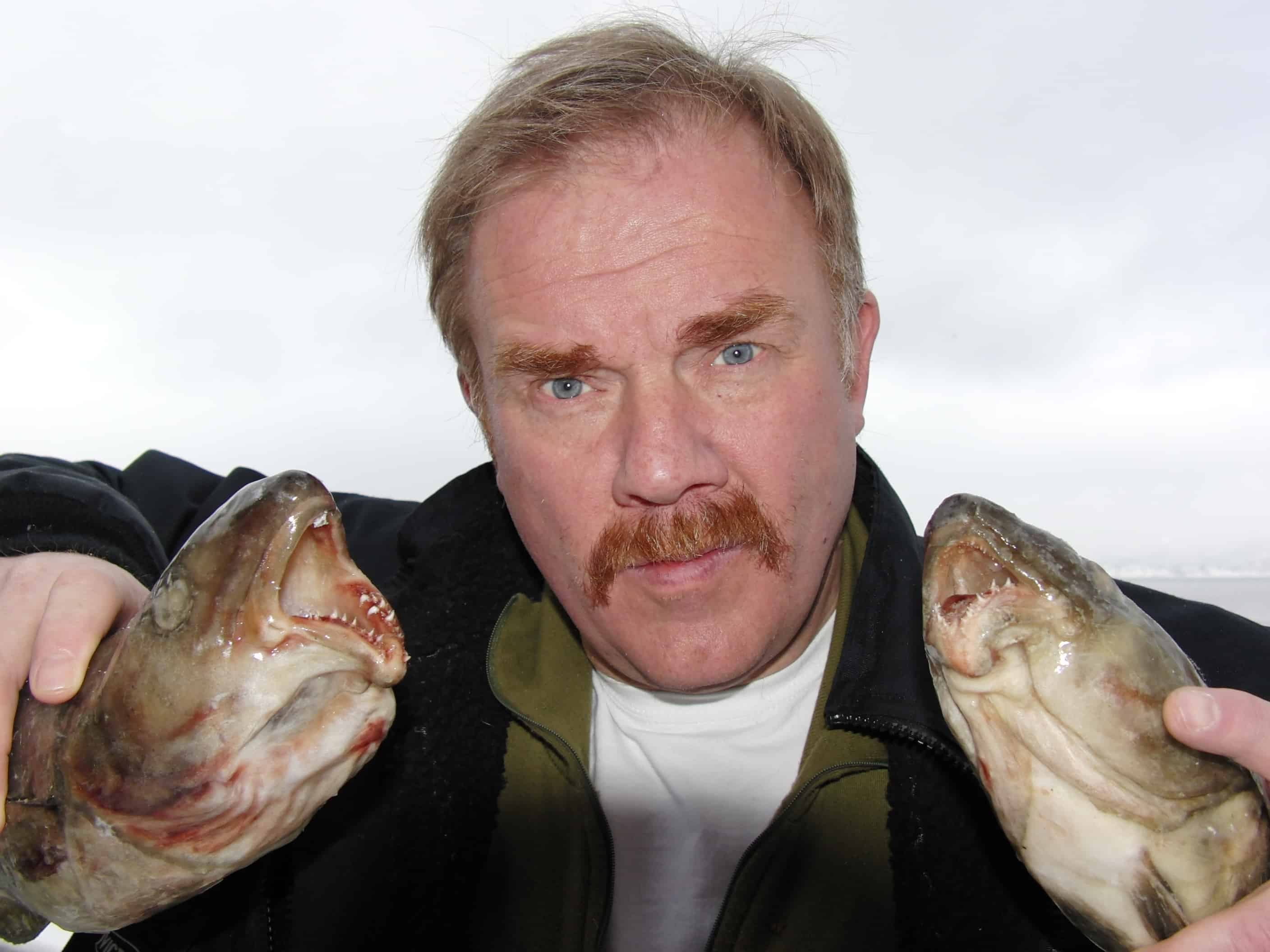
The cod currently being farmed has many generations of further degeneration from the farmed cod that was tried 15-20 years ago. This is certainly not the way we want fish to spawn alongside our wild cod stocks. Once the breeding genes have entered coastal cod and skrei, there is no going back. The cod can quickly be ruined forever.
- Update March 2023
- Update February 2023
- It has never been as bad as it is now.
- The Green Warriors of Norway reports escapes to the police and once again sends demands to the Ministry of Trade and Fisheries
- Green Warriors of Norway (NMF) has taken a closer look at the problems for nature and species diversity that still accompany cod farming.
- Spawning in the fish cages
- Escape of Cod from the cages
- Animal cruelty
- Contamination
- Cod farming will of course result in just as much fish waste and foreplay as other fish farming.
- Diseases
- Cod lice and Scotch lice
- The wild fish graze on farmed feed
- Jobs at breeding facilities
- Conclusion and requirements
- Will cod farming be the next ecological disaster for our fjords?
It has never been as bad as it is now.
Escapes of degenerate farmed cod have hit the news again;
87,000 cod escaped from farms - one of the biggest escapes in a long time
Only 408 cod have been caught after the great escape from the cages in the Volda. The fear is that the escaped farmed cod will reproduce with wild cod. – NRK 14 December 2022
Large quantities of escaped farmed cod are also caught in Meløy municipality in Nordland;
In Meløy municipality in Nordland, Lars-Gøran Ulriksen sounds the alarm. The fisherman discovered earlier this year that he was getting what he believed to be farmed cod in the nets.
- In January, we got a total of between 70 and 80 kilos a day. Then we found out that we should try at the breeding facility. We ended up with 1,500 kilos of round cod. Everything is farmed cod, says the fisherman.
Ulriksen contacted the Directorate of Fisheries and asked them to investigate the matter. He has delivered fish from the catch in question for examination. – NRK 18 January 2023
Norcod in Meløy municipality is ordered to culling farmed cod because it has reached sexual maturity in the cages;
The Directorate of Fisheries has ordered NorCod to be culled of two cages at the location in Frosvika in Meløy municipality, after the discovery of sexually mature cod in the facility. In connection with an order to carry out an assessment of the degree of maturity of the cod at NorCod's location in Frosvika, fish that are in the process of developing into spawning fish were found in several cages. The Directorate of Fisheries has therefore given the company an order to slaughter two out of five cages within four weeks. At the same time, further control and reporting of maturation in the remaining three cages is required. – Directorate of Fisheries 3 February 2023
..and in NRK;
Have to slaughter large quantities of cod because it has reached sexual maturity. The Directorate of Fisheries fears that thousands of farmed cod will reproduce. Now they demand quick slaughter. – NRK 7 February 2023
..and at the same time, thousands of escaped farmed cod have been caught in Meløy.
The fishermen say they get nets full of escaped cod - but no one knows where the cod has escaped from. - The fish behaves differently to normal cod, and has a different shape on its head and back, says a worried fisherman. – NRK 18 January 2023
And in the usual pattern from the farming industry, there are once again large quantities of escaped farmed fish that have "never escaped". We have seen this in several places and over several years. When fish become ill or in other ways become a financial burden for the breeders, there are suddenly large quantities of escaped farmed fish in the surrounding waters around the facility, without any escapes being reported or any breeding company acknowledging the escape. The escaped farmed cod in Meløy had to be sent for genetic testing to find its origin.
Even after the fish was identified as originating from the nearest cod farm, Norcod does not accept any responsibility. They simply have no idea how the fish could have escaped;
Norcod has no idea how the farmed cod escaped. The Directorate of Fisheries has concluded that the escaped farmed cod in Meløy in Nordland probably originates from Norcod. "The analyses, carried out by the Institute of Marine Research, conclude that there is a very large genetic similarity between the escaped cod and fish from the cages in the facility", the directorate writes. Cod farming is in an early but rapidly growing phase in Norway, and Norcod is among the largest players.
At Norcod, they have no idea how the fish got astray.
- There is still no conclusion as to how the cod could have escaped from the location, the company writes in a stock exchange announcement.
- With reference to previous statements, we have so far not discovered any damage to the nets that could have given the fish the opportunity to escape, nor have there been any recorded incidents related to the operation that could have caused the escape of fish, writes Norcod further.
The company points out that the nets have already been inspected by third parties and will also be thoroughly inspected by the Directorate of Fisheries when the site has been emptied. Norcod also states that they are putting considerable resources into finding the answers, and that they have not registered any change in biomass (the amount of fish) and expect minimal financial impact due to the incident. – E24 February 19, 2023
It is striking that large quantities of escaped farmed cod are caught in the fjord at the same time that the responsible farming company is not missing any fish or has any idea how they might have escaped. Another point that gives reason for extra concern is that the company Norcod sees absolutely no problems with genetic contamination of our stable cod stocks, but only sees this as "..and expect minimal financial impact from the event". This is a particularly cynical industry that completely lacks environmental responsibility in such an important matter that actually affects the very existence and survivability of our most important species of fish. This is serious environmental crime of the worst kind.
If Cod should fail us, what would we have then? – Petter Dass (1647-1707)
That there are huge consequences from fish that escape from farms every year we see easily when we see the size and scope of the many escapes. In Vadheim in the Sognefjord, on 29 October 2022, as many as 35,000 farmed salmon ready to spawn and suffering from PD (SAV3 Pancreas Disease) escaped. This is a disease that can be transmitted to wild fish. This escape happened at the very worst time when PD-infected farmed salmon ready to spawn escaped at the same time as the wild salmon are also searching the rivers to spawn. In comparison, for the 35,000 escaped farmed salmon in this fjord, in 2021, 946 salmon were caught distributed among the 15 salmon river basins in the Sognefjord in 2021. This is a whopping 37 times more than the total catch in the entire fjord system. This is a whopping 37 times more escaped PD-diseased farmed salmon than the total catch in all salmon-bearing waterways in the Sognefjord in one year.
In the entire Sognefjord, 946 salmon were caught in 15 watercourses in 2021. In the same year, 201 salmon migrated up Ytredalselva, which is 2.5 km from the weekend's escape. In Aurlandselva this year there are only 27 wild salmon in the entire watercourse, in the king's river, Lærdalselva, the salmon is protected because there are too few wild salmon in the watercourse. – Reader's post in Firda 01.11.2022
The Norwegian Environmental Protection Association has reported all cases.
The Green Warriors of Norway reports escapes to the police and once again sends demands to the Ministry of Trade and Fisheries
The Norwegian Environmental Protection Association has, over many years, consistently reported all offenses from the farming industry to the police, but it has never been as bad as now. Both the police report of the companies Sunnmøre Torsk AS and Gadus Group AS for 87,000 escaped farmed cod at the location Alida in Volda municipality in Sunnmøre, and Norcod AS for an unknown number of escaped farmed cod you can find in the links below. You will also find the Swedish Environmental Protection Agency's police report of Aller Aqua Norway AS for the salmon escape at Flotneset in Høyanger municipality in the Sognefjord in the link below.
Update 16 February 2023
After 87,000 farmed cod escaped in the Volda last autumn, Gadus Group AS now decided to change the name to Ode. The company has also been allocated another location for cod farming in Aure. Have they really not learned after causing a whopping 87,000 genetically degenerate farmed cod to be released into the environment in the Volda just a few months ago? Don't they have the slightest hint of environmental responsibility? With the gift of audacity, they write the following on their new website;
Ode to Excellence
The cod is worshiped and trusted in all corners of the world. A healthy globetrotter that has fed many mouths and shaped many food cultures. We give praise to this delicacy. Nurtured in controlled environments based on sustainable principles. Naturally cared for in crystal-clear Norwegian waters, this is excellence in its purest form. – ode.no
Ode to Continuity
Everything we do is based on sustainable principles. Our vision is long term, and we will continue to produce in harmony with nature. Working so close to nature, we recognize our responsibility for a life lived well in the sea. – ode.no/sustainability
Lower footprint
Today, we produce a high-quality, healthy protein with a low environmental footprint from a value chain that is based on the use of renewable energy and utilization of the entire fish.
We strive to be partners and actively participate in the local communities in which we are present. With new jobs and increased local value creation, we will help keep the lights on in houses all along the coast. – ode.no/sustainability
Here we find neither "based on sustainable principles", "produce in harmony with nature", "lower footprint", or "responsibility for a life well lived in the sea". We have hardly seen a more cynical and ruthless company than Ode (Gadus Group). And now, after polluting the local cod ponds with 87,000 escaped farmed cod, they are ready to start cod farming in yet another new location. There is no remorse or will to improve. It is quite clear that the Swedish Environmental Protection Agency was absolutely right to report the company to the police.
And again, the Green Warriors of Norway had to send yet another letter (25/01/2023) to the authorities at the Ministry of Trade and Fisheries demanding that cod farming must be stopped;
The Green Warriors of Norway (NMF) is once again demanding that cod farming be stopped.
The Norwegian Fishermen's Association sent a letter to the ministry on 19 January 2023, asking that processing of new permits and locations for cod farming be put on hold until further notice. NMF supports this requirement. We also ask that the practice of free licenses for cod farming must end, and we demand that the existing facilities be emptied and left fallow as soon as possible
Basis for our claim:
NMF would firstly like to point out that we have submitted a similar claim to FD long before the latest incidents of escapes. But now sees the importance of submitting a similar claim again.
NMF's concern is that the current way of farming cod has no improvements whatsoever from the previous "cod adventure" which was stopped around 15 years ago, due to major problems with escapes and spawning in the cages. NMF now sees that large quantities of cod have escaped within a short time. … Read more in the letter…
(This letter is linked below)
- The Green Warriors of Norway's requirements to the Ministry of Trade, Industry and Fisheries 25 January 2023 (PDF)
- The Ministry of Trade and Fisheries' letter to the Swedish Environmental Protection Association of 07 March 2023 (PDF)
- The Green Warriors of Norway's review on 13/12/2022 of the cod escape in Volda, Vestland county (PDF)
- The Green Warriors of Norway's review 16/02/2023 of the cod escape in Meløy, Nordland (PDF)
- The Green Warriors of Norway's review on 23/12/2022 of the salmon escape in Vadheim in the Sognefjord (PDF)
- Read Miljømagasinet 2-2008 Fighting against cod farming (PDF)

- Update March 2023
- Update February 2023
- It has never been as bad as it is now.
- The Green Warriors of Norway reports escapes to the police and once again sends demands to the Ministry of Trade and Fisheries
- Green Warriors of Norway (NMF) has taken a closer look at the problems for nature and species diversity that still accompany cod farming.
- Spawning in the fish cages
- Escape of Cod from the cages
- Animal cruelty
- Contamination
- Cod farming will of course result in just as much fish waste and foreplay as other fish farming.
- Diseases
- Cod lice and Scotch lice
- The wild fish graze on farmed feed
- Jobs at breeding facilities
- Conclusion and requirements
- Will cod farming be the next ecological disaster for our fjords?
More and more applications for cod farming are now on the municipality's table for processing. At Senja Kommune alone, there are now a total of 9 applications on the table relating to the farming of cod. Also in national salmon fjords, the breeders now see that it is possible to enter cod farming, as these fjords only have a ban on salmon farming. We now see this as an example of where such farming is in place as a proposal for new aquaculture areas in the Trondheimsfjord, at Levanger Municipality. Here, one easily skips over, and overlooks all the subsequent environmental problems that farming in open facilities entails and which also affect the conservation values of the national salmon fjords.
Cod farming is and will be a danger to the environment and wild fish along our coast. The last time cod farming was tried 10-15 years ago, it did not go so well, partly because the fish had an overly aggressive behaviour, with a lot of escapes and damage to the fish as a result. Cod farmers claim these problems now that they have managed to breed away through several generations. But even if this is true, the problems for nature, the environment and wild fish remain the same as the last time cod farming was a focus area in aquaculture. Pollution from the facilities, diseases that infect wild fish, the spread of cod lice, the use of chemicals to remove lice, and not least the impact on the local coastal cod because the farmed cod both escapes and spawns directly in the cages.

Green Warriors of Norway (NMF) has taken a closer look at the problems for nature and species diversity that still accompany cod farming.
And they are as follows:
Spawning in the fish cages
Farmed cod are known to spawn in the cages, probably due to the unusual environmental conditions of high temperatures and lots of light. (see link) This causes large quantities of roe and milk from the farmed cod to flow into the fjord, and the local coastal cod will then be genetically mixed with a type of cod that does not belong in the fjord at all. This will in turn, over time, cause the native coastal cod to die out.
The fish in a single farm can release tens of billions of cod eggs - Kyst og Fjord
The difference and the negative consequences for the wild cod strain, are the same as when mixing farmed salmon into the native wild salmon strain. Coastal cod is native to the same extent as wild salmon.
The breeders are trying due to a poor ability to control sexual maturation and spawning through the use and manipulation of the light the fish are exposed to. When the control of light is one of the most important tools to prevent the cod from becoming sexually mature and spawning, it is very likely that both technical and human failure will lead to spawning and strong genetic contamination of the unique coastal cod.
It is claimed by farming companies that the cod that is wanted and farmed today has been genetically adapted/bred so that it is "a bit lazier, dumber and laxer". These are artificial characteristics that you absolutely do not want mixed in with the unique wild fjord and coastal cod.
Here are the Norwegian cod (forskning.no)
Escape of Cod from the cages

Escape of cod in open cages was also a major problem in previous attempts at cod farming, as it gnawed its way out of the cages with the same negative problems of spawning for the native cod stock.
Although today's farmed cod have been bred for a "calmer" behaviour, escapes will of course also occur in today's cod farming. Escaped cod will quickly adapt to the local conditions and will participate in the seasonal spawning together with their wild relatives. This escaped cod will then spread its genes year after year among the local cod stock, with major negative consequences and with a higher survival rate than when spawning in the cages.
If parallels are drawn to the farming of anadromous salmonids that escape in large numbers every single year, the escape of cod can also be claimed to be even more dramatic. After all, in addition to escaping, anadromous fish must enter a salmon-carrying waterway and overcome the obstacle that river migration can pose, while the farmed cod actually escapes straight into the fjords that are used for spawning the local coastal cod.
Animal cruelty

Farming cod is animal cruelty on the same level as farming farmed salmon and farmed trout.
From salmon farming you know that 20% of exposed fish die as a result of poor animal welfare before they reach a size ready for slaughter. These are startlingly high figures, especially considering that the farming industry has "refined" its methods over 60 years of salmon farming. How will this number be for the cod, which they really know very little about? Recently, 48,000 thousand cod died from a facility owned by Statt Torsk. (see link)
The cod is not a distinct shoaling fish and will experience the crowding in the cages as a stressful moment. When species that are not shoaling fish come close together, the chances of wounds, injuries, and subsequent disease and outbreaks of infection increase. In addition to the problems this creates for the fish in the cages, this is also an infection that will spread to wild cod in the fjord.
Cod is a demersal fish, and in farming it is forced to live close together on the surface. This gives increased exposure to diseases, infection, and a significant chance of physical malformations as a result of pressure differences etc. Previous attempts at cod farming showed major challenges with malformations in the fish, where as much as 50% could have major physical defects.
Cod dies in the cages: 48,000 fish died at Statt Torsk | Finansavisen

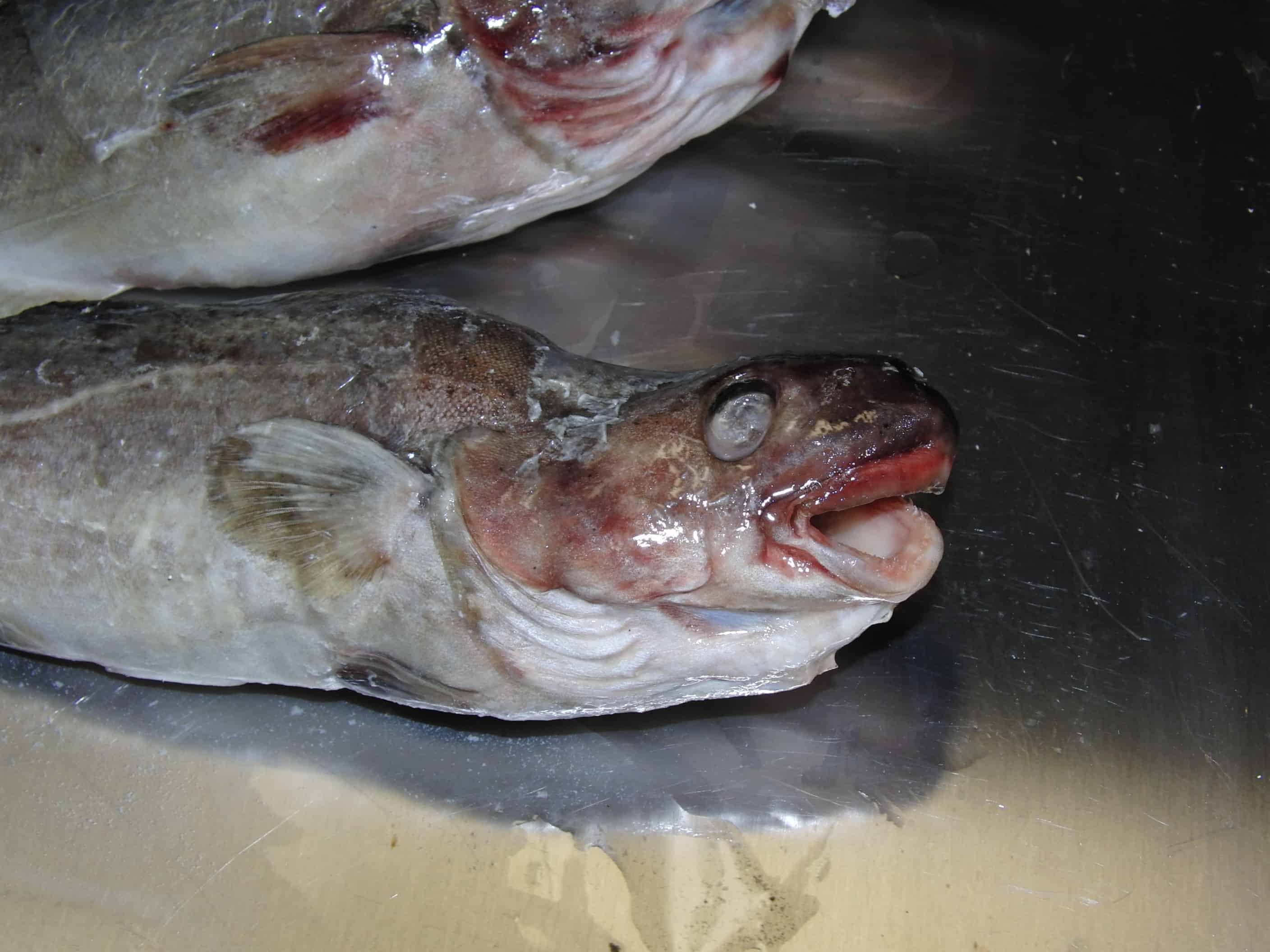
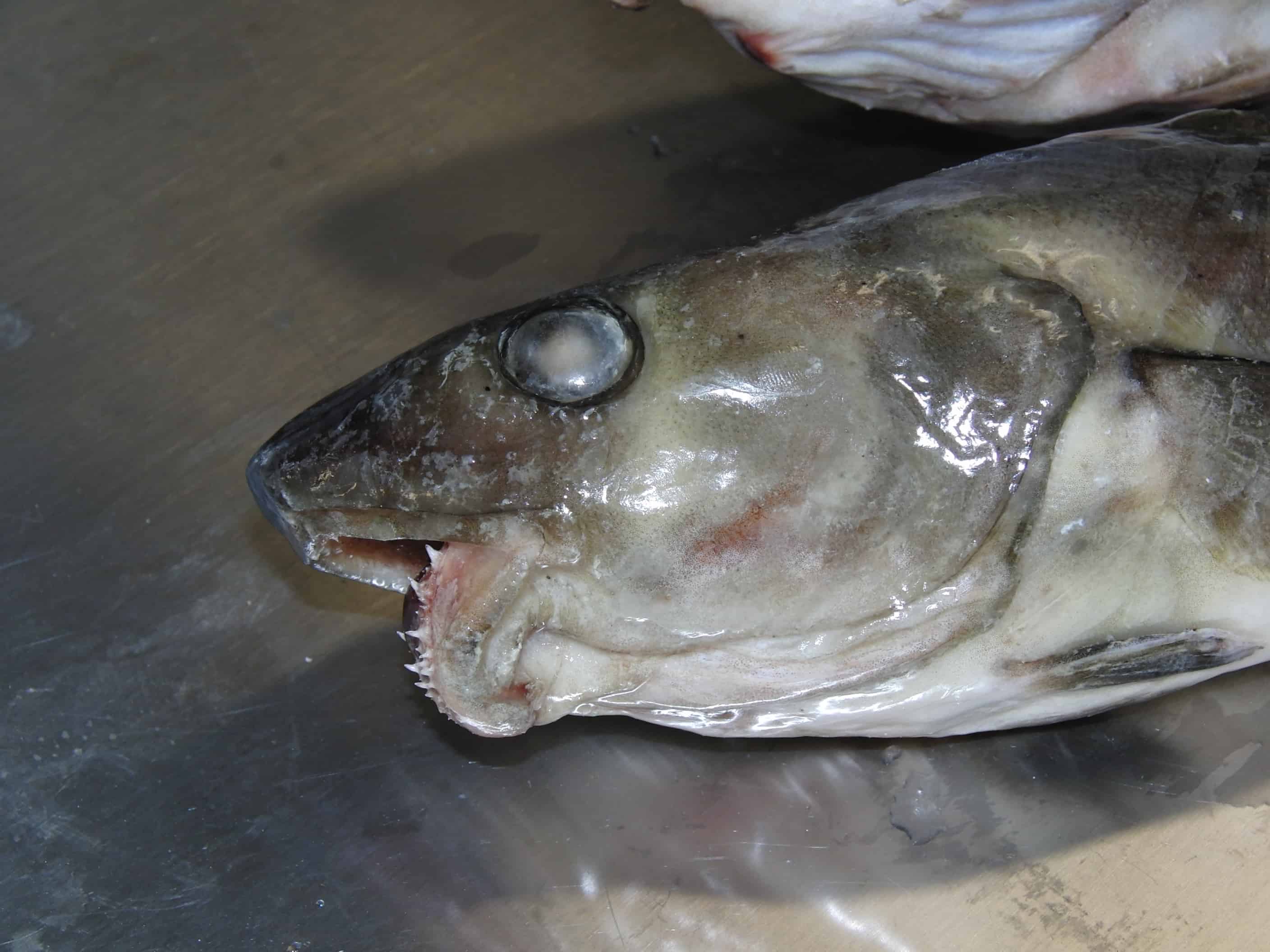
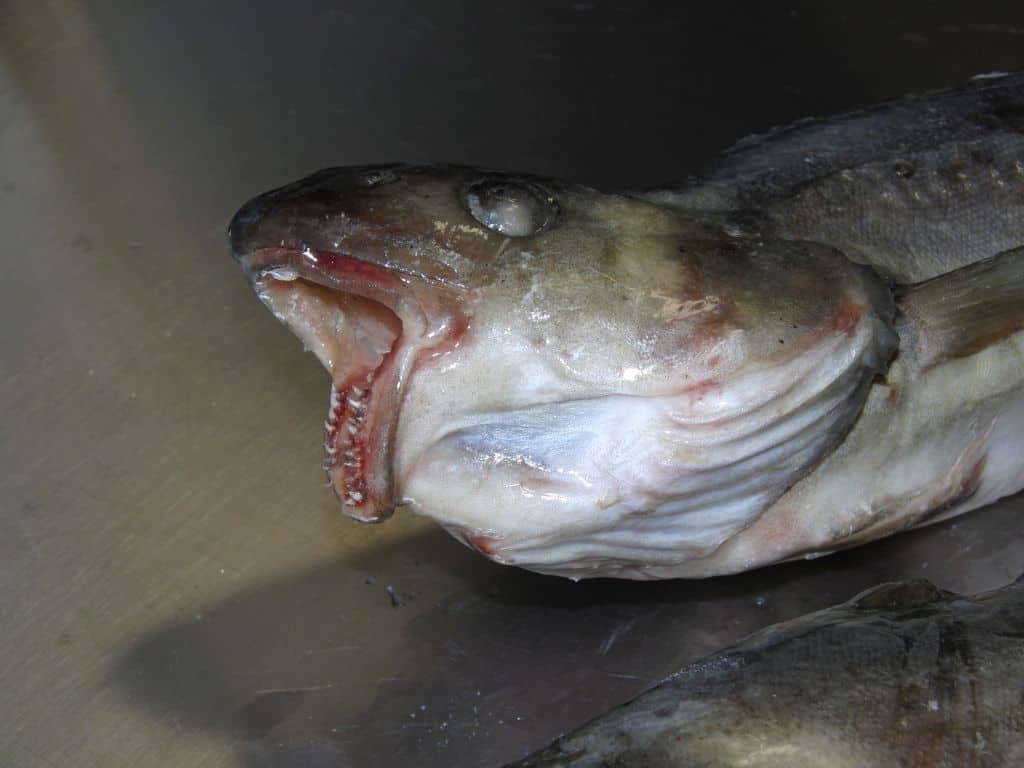
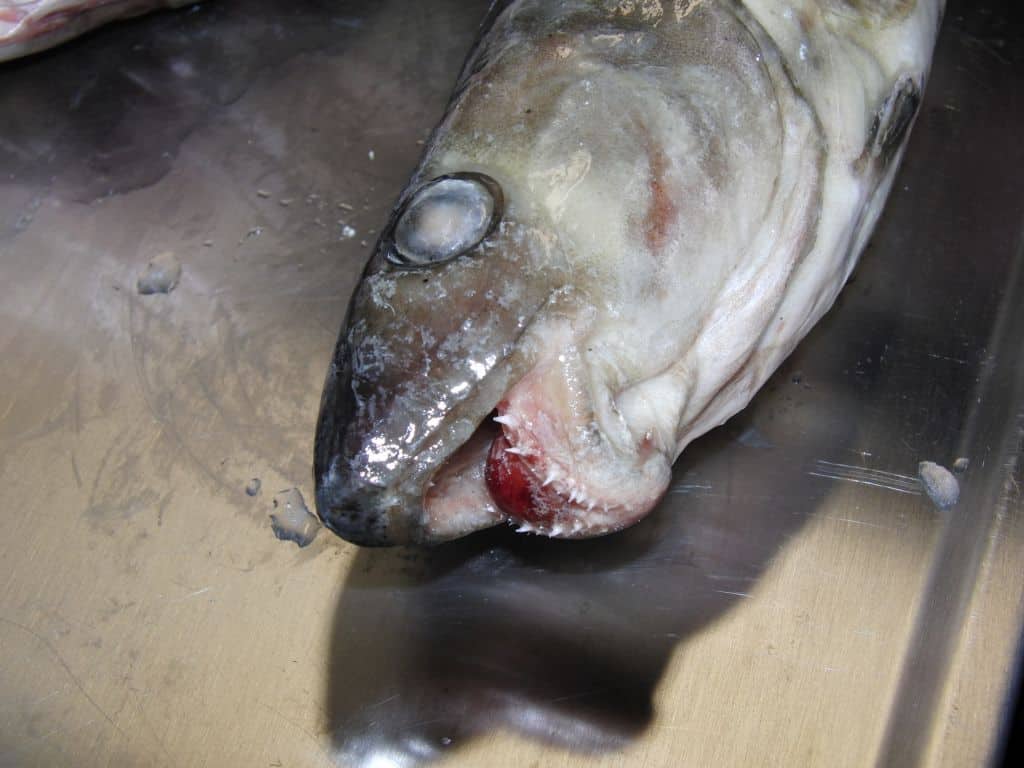
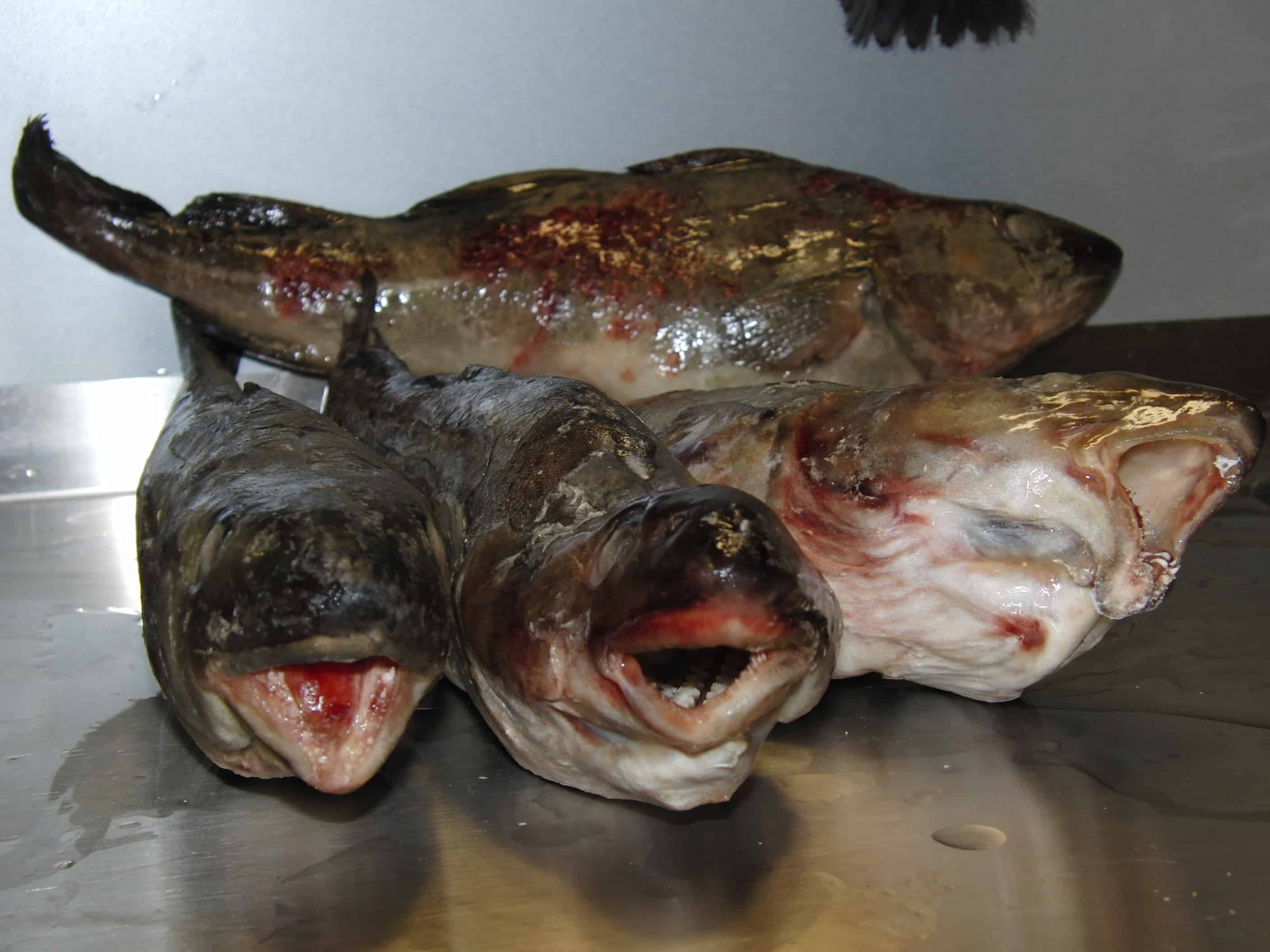


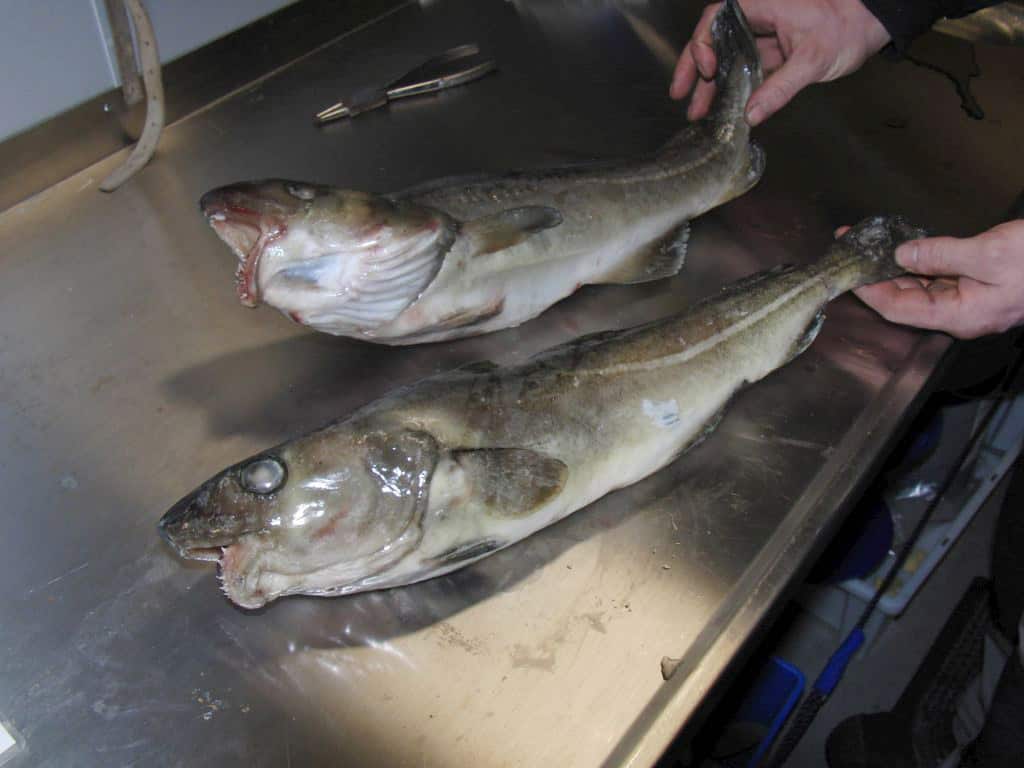
Contamination
The pollution from the cages in cod farming will be in addition to, and will be proportionally the same as for, other fish farming. Here, tonnes of fishing waste and debris will flow into the fjord every day all year round, with siltation of the bottom conditions in large areas around such facilities as a result.
Any coral deposits are very vulnerable for only small changes in bottom contamination. Seaweed, kelp and other vegetation are also vulnerable to mud drifting, and these are exposed by the mud being transported around with current conditions. The fact that the vegetation cannot withstand the sludge itself often affects large areas around the facilities, but the seabed below and around the facility is also severely deteriorated, covered with sludge and suffocated. The oxygen level in the area will also gradually decrease with such emissions of organic substances, so that there is a risk that life in an increasingly large part of the area will slowly but surely die out.
Cod farming will of course result in just as much fish waste and foreplay as other fish farming.
Diseases
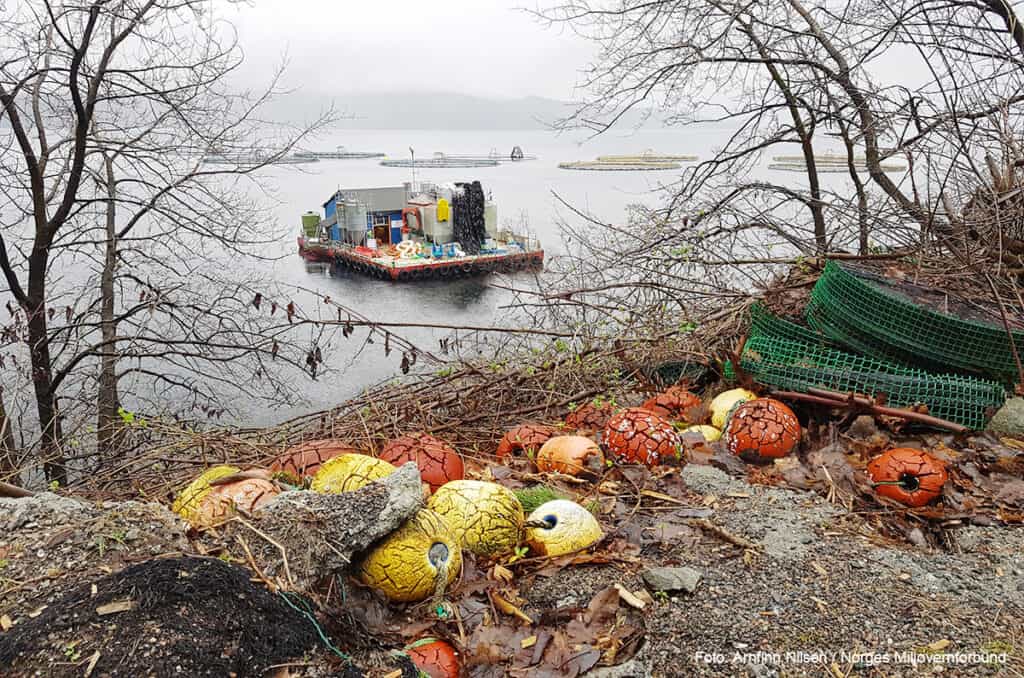
The cod can be affected by various pathogens, both bacteria, viruses and parasites. For example, nodavirus has been detected on cod, but it is not known whether it poses any great danger to the fish. We otherwise know very little about pathogens and disease in cod, and if cod farming grows in scale, new disease challenges will certainly appear. In 2004, a bacterial disease caused great mortality in Norwegian cod farming.
The bacterium Francisella noatunensis eventually became the main problem in cod farming. It causes disease in the cod and cannot be treated with antibiotics, because it lives inside the fish's cell. There is also no vaccine against the disease. The bacterium was also observed in escaped cod, with the potential to spread to wild cod stocks. (see link) Intensive farming of cod can in the long run lead to significant problems with infectious diseases. These can be caused by already well-known infectious agents (agents), known agents with a changed form of expression (e.g. more aggressive variants), agents that are known from other species and which adapt to cod, or hitherto unknown agents. They are mainly expected to represent a threat to the industry itself, but will also be able to threaten wild populations. Acute problems are initially expected to be combated with chemical means where this is possible (bacterial and parasitic diseases). In the long term, this will not be an acceptable strategy.
Finally diseases, especially diseases caused by viruses, you can under no circumstances rely on chemical control methods. Viral diseases can become a serious threat to sustainable cod farming. It is feared that control of viral diseases will become very difficult unless sensible routines are already established today to limit the extent. (Veterinary Institute) (See attached link to report)

Farmed salmon and trout in open cages suffer from no less than 16 known diseases. Diseases that can all spread to wild fish that will also get sick and die. These diseases are treated with a number of different drugs, which in turn will flow into the sea in faeces from the treated salmon. These drugs are added via the feed, which will also be eaten by the wild fish as a result of forage. On average, a farm operates with as much as 7 % forage. These are huge quantities, which will sink through the cages. And which will in turn be eaten by the wild fish that graze under the cages.
There is nothing to indicate that the cod does not also have to be treated with several different drugs against a number of diseases, so that the problems for wild fish with the consumption of such drugs are the same as when wild fish eat waste feed from salmon and trout farming.
A medicated fish is not allowed to be sold for human consumption, but must stand for a considerable amount of time and starve for medication in order to get "free" from the drugs. The wild fish obviously does not have this opportunity until we humans fish it for food. That way, those of us who catch a food fish for dinner will also get these various drugs that were intended for the sick farmed cod. NMF is certain that diseases that occur in the cages will spread to the wild fish in the area with possible fatal consequences for more types of fish than cod, which is also supported by several researchers. (see link below)
The bacterium Francisella noatunensis :
Cod farming | Institute of Marine Research (hi.no)
Report disease and virus:
Environmental problems in connection with cod farming (vetinst.no)
Spread of viruses and disease:
Researcher: No doubt about spread of deadly virus from farmed fish to wild fish | DN
Cod lice and Scotch lice

Like salmon, cod also has lice, both Scots lice and Cod lice are common on cod. Scots lice in particular also spread freely to other species, this means that the spread of lice to the local coastal cod and other species in the fjord from the farmed cod will generate the same problems as the spread of salmon lice to the wild salmon from the open cages that produce salmon and trout. In fact, one can expect the occurrence of lice associated with farmed cod to be even more dramatic than the lice situation for salmon. After all, salmon lice need salmon to exist, while the lice associated with cod will be able to settle and spread freely among a much larger number of potential hosts, who in turn "hang" around the facilities to graze on waste feed and faeces. When the lice problems become too great, the cod must also be treated with lice poisons, similar to salmon and trout farming. Lice poisons which will again spread in the fjord and kill shellfish that come into contact with these poisons. Lice poisons and drugs will also spread in the food chain, where it can end up on the dinner plates of those who fish in the fjord for a few weeks.
Facts about cod lice and barnacle lice:
Scots lice and cod lice | Institute of Marine Research (hi.no)
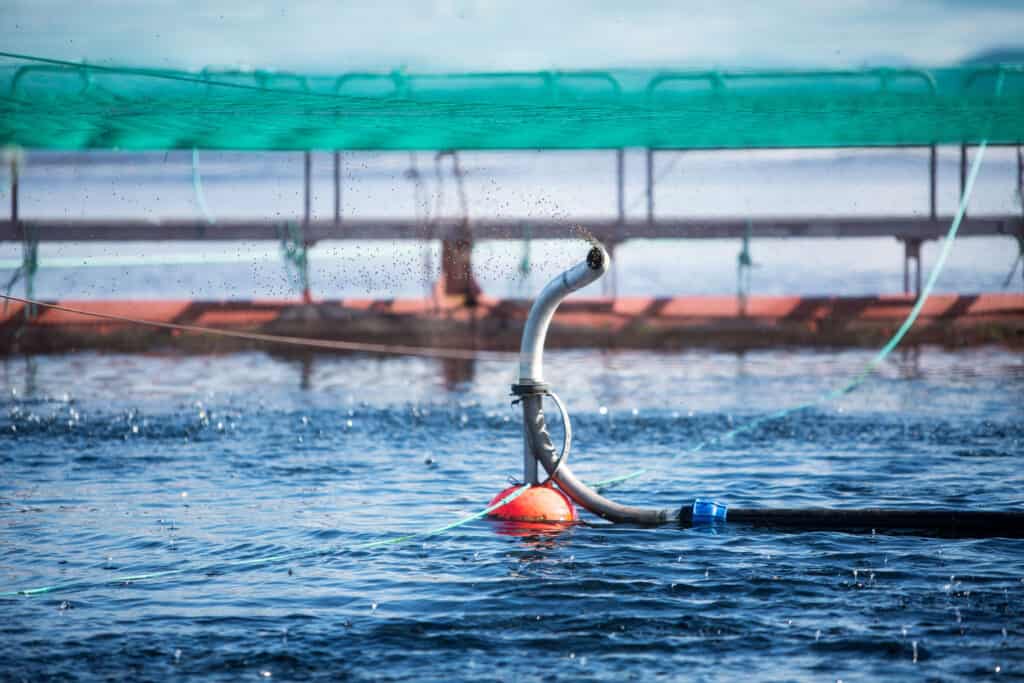
The wild fish graze on farmed feed
NMF is also concerned about the wild fish that gather under the facilities to graze on forage. Fish that graze during the breeding facilities will be reduced in quality, and both local hobby fishermen and professional fishermen will be negatively affected by this. Previous studies have documented that there is an average of 10.2 tonnes of wild fish represented by 16 different species around each farm. The impact on the local ecosystem is massive.
Fish caught in the vicinity of breeding facilities will also not be able to be sold as food fish by the local fishermen, both due to reduced quality, but also as a result of uncertainty around medication, lice poisons and detention time. Wild fish simply eat themselves fat and dirty by eating farmed fish. Something there are several examples of from fish that have grazed under the cages with farmed salmon and trout.
Wild fish get their fill of farmed food: - I'm simply pissed off - NRK Nordland
Jobs at breeding facilities
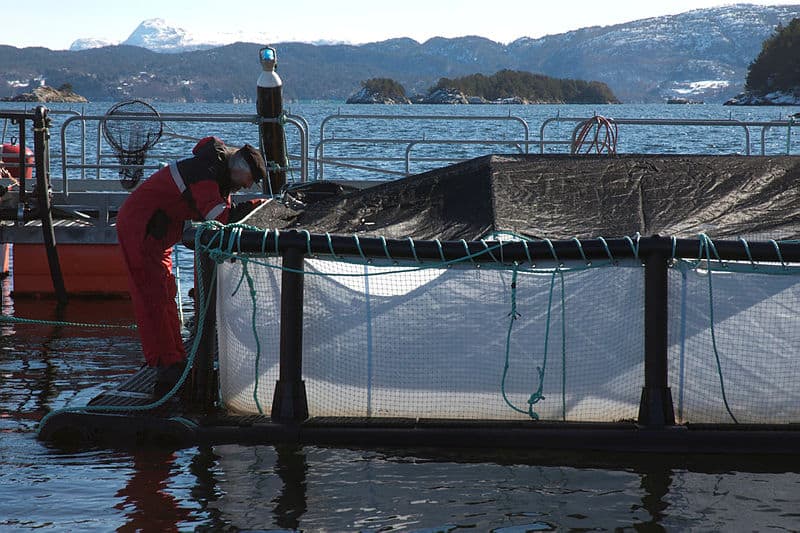
The breeders always entice lots of local jobs. The figures they come up with turn out time and time again to be completely unrealistic. In a normal breeding facility with 4-8 cages, only 3-5 people work, who also often smoke several facilities. Most of the work is digitized in relation to what was needed in terms of labor for e.g. feeding the fish earlier. Now it is automated foraging machines that do the work. In addition, you can see that it is often seasonal workers hired through the EEA agreement who are employed, as these have completely different requirements for wages and working hours than Norwegian workers have.
A factor that should not be overlooked is that established fish farms also have a negative effect on other industries, such as local fishermen, the tourism industry etc. These workplaces are often negatively affected to such an extent that they are in practice driven from the areas. Cooperation between farming and other industries is often difficult in practice.

Conclusion and requirements
On the basis of this, the NMF has demanded that all new licenses applied for for farming cod in open facilities be refused/banned and that existing licenses are urgently required to adopt an emission-free operating method. Cod farming adds to the environmental problems we already have along the coast with salmon farming. The ecosystems of the Norwegian coast cannot withstand another "farming adventure".
Will cod farming be the next ecological disaster for our fjords?
The Green Warriors of Norway (NMF) is working hard to prevent this from spreading. Our biggest fear is that we will be right in our prediction: first they destroyed the wild salmon population, now they want to destroy the coastal cod..
- Update March 2023
- Update February 2023
- It has never been as bad as it is now.
- The Green Warriors of Norway reports escapes to the police and once again sends demands to the Ministry of Trade and Fisheries
- Green Warriors of Norway (NMF) has taken a closer look at the problems for nature and species diversity that still accompany cod farming.
- Spawning in the fish cages
- Escape of Cod from the cages
- Animal cruelty
- Contamination
- Cod farming will of course result in just as much fish waste and foreplay as other fish farming.
- Diseases
- Cod lice and Scotch lice
- The wild fish graze on farmed feed
- Jobs at breeding facilities
- Conclusion and requirements
- Will cod farming be the next ecological disaster for our fjords?




